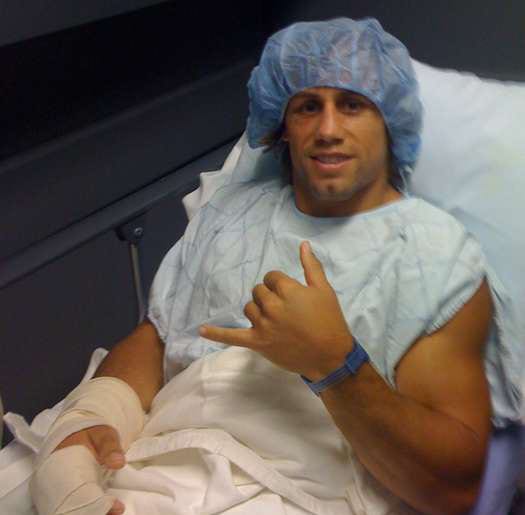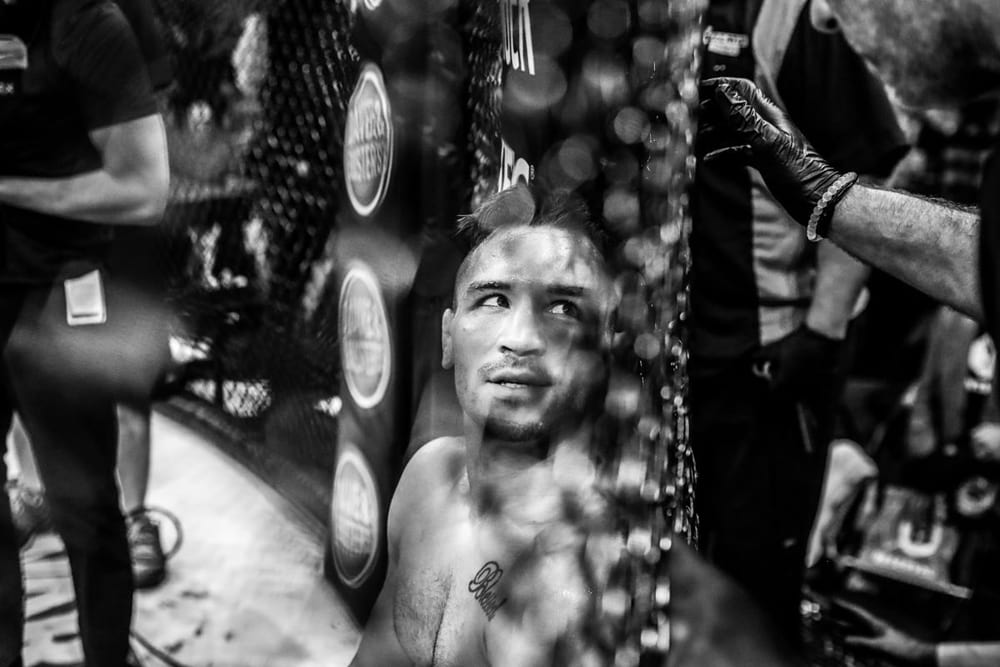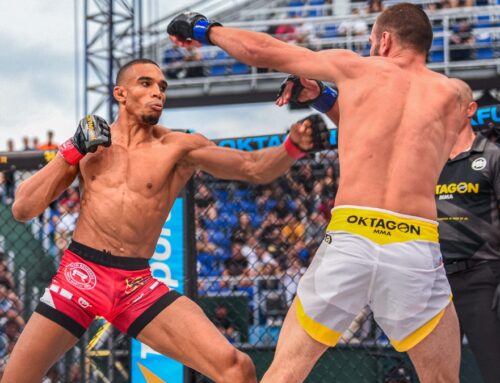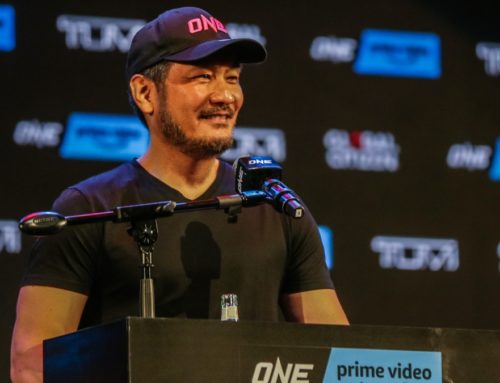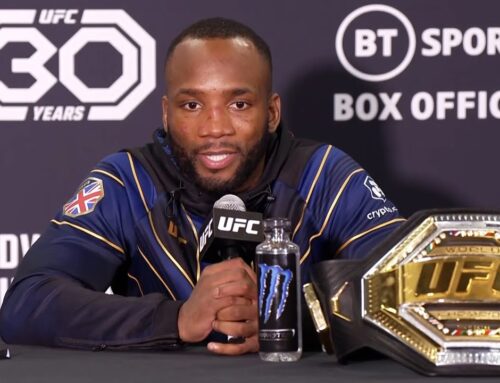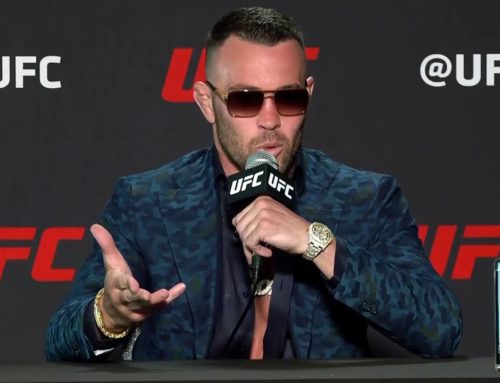A minute into the second defence of his Bellator lightweight championship, Michael Chandler felt a sharp pain in his left foot and all of a sudden it became apparent to all but Michael Chandler that his opponent, the undefeated Brent Primus, was soon going to be announced as the new Bellator lightweight champion.
No need for Nostradamus or an eight ball, Chandler, the favourite, was no longer able to stand properly, having badly sprained his ankle when moving backwards to evade a Primus head-kick, and his challenger and everyone in attendance sensed just one inevitable conclusion. It was why Primus got excited and went after Chandler, mercilessly so. It was why he targeted the champion’s leg with kicks.
The only person delusional enough to still believe Michael Chandler would win the fight was Michael Chandler. He couldn’t put any weight whatsoever on his front leg, but still Chandler, the fighter, tried to somehow fight Primus. He played possum, he flexed his finest poker face. He even got through with a right hand, arguably the best shot of the contest, that rocked Primus back on his heels.
In the end, however, sanity prevailed and Chandler was saved from himself after two minutes and twenty-two seconds of round one. Time-out called, he was sat down on his stool and, though expressing a desire to continue, was stopped from doing so by the doctor and referee.
“Just cut the thing off!” Chandler protested in the post-fight interview.
Witnessing a scene like this does more than just incite queasiness and make us want to look away. It also acts as a reminder of why fighters fight and the rest of us don’t. The fighter in question here, Michael Chandler, had no qualms about continuing in a debilitated state. There was no fear of what might happen. No fear of the injury, no fear of his opponent. In fact, based on the gusto with which he fought, Chandler’s injury only served to invigorate and inspire a champion who knew his title reign was suddenly in jeopardy and his back against the wall.
Undoubtedly a rare breed, here are some other examples of fighters who pushed through the pain barrier when most mere mortals would have cowered, quit or just cried.
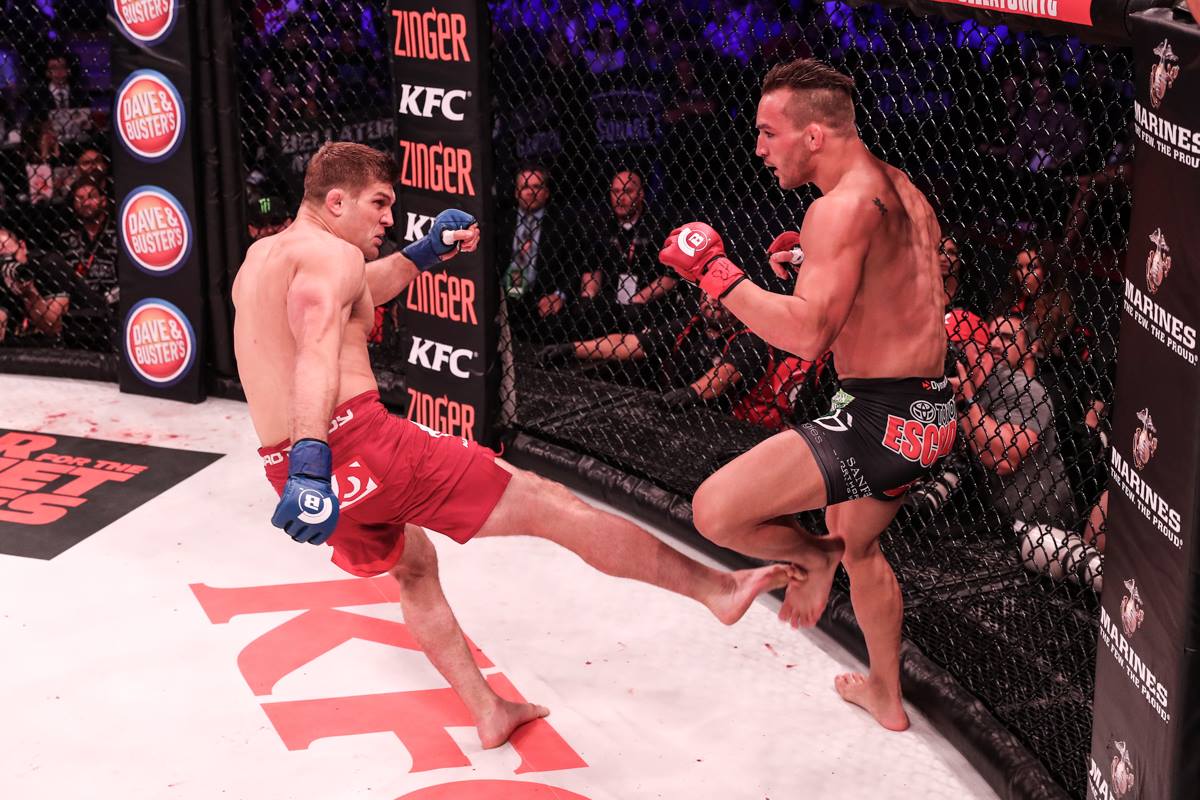
(Photos courtesy of Bellator MMA)
Wonky Toes
Toe injuries creep up on you. At first visible only to those close, they soon crawl beneath your skin and induce nausea once replays and the zoom of a camera are put to use. Then come the pictures. Then it all starts to make sense.
Fighters, though, have shown an admirable ability to fight through even the freakiest of toe injuries. Take Jon Jones, for example. His big toe was almost hanging off the night he put a hurting on Chael Sonnen at UFC 159. But did it stop him from going to work? Did it stop him from kicking? Did it change the pattern of the fight? No, of course it didn’t. Jones, running on adrenalin and a need to silence Sonnen, carried on regardless and had an ‘American Gangster’ curling up against the fence in the very first round.
‘Bones’ Jones isn’t the only one. Uriah Hall also went through the shock of feeling his toe was about to drop off his foot when he broke it during a unanimous decision victory over Thiago ‘Marreta’ Santos in July 2014.
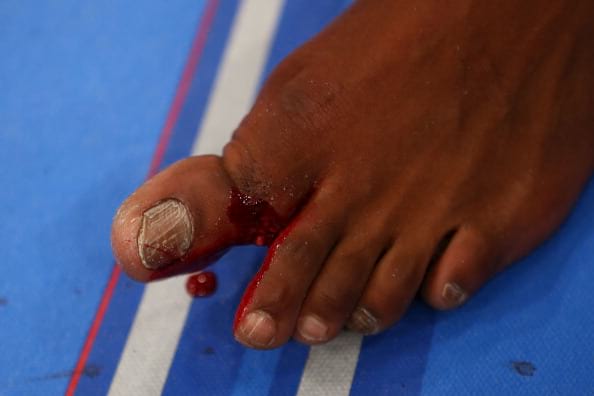
Torn ACLs
Torn anterior cruciate ligaments can go undetected to all but the man or woman on the receiving end of them. Ben Rothwell, for instance, knew he had a problem the moment he attempted to take down Gilbert Yvel in their fight at UFC 115, but no one else did, nor could he do anything about it. He couldn’t shout or scream. He couldn’t stamp his feet and wave his hands and beg for mercy. He simply had to continue his takedown attempt and continue with the fight. His ACL was torn and he’d be out for nine months because of it, but that was all immaterial in the moment. There and then he had only one thing in mind: dominate Gilbert Yvel and get the victory. Which is precisely what he did, taking a unanimous decision after fifteen minutes of fighting handicapped. Three days later, he underwent surgery to repair both his ACL and meniscus.
Similarly stoic was Conor McGregor, who defeated Max Holloway by unanimous decision at UFC Fight Night 26 but tore the anterior cruciate ligament in his left knee in the process. He, too, was told he’d be out for nine months as a result of the injury. He, too, chose not to use it as an excuse for not finishing the fight. He did, however, allude to an injury, picked up during a second-round scramble, in the post-fight press conference. “I heard a big pop and I let out a scream mid-round, but I passed into side-control with it,” McGregor said. “When we stood back up, I was unsteady on it.”
Broken Forearms
The last thing Rich ‘Ace’ Franklin wanted in a UFC 115 fight with Chuck ‘The Iceman’ Liddell was to lose the use of his left arm a minute into the first round. But that’s exactly what happened when the Cincinnati native blocked one of Liddell’s kicks and found his forearm broken and immediately of no use.
The game plan, whatever it happened to be, went out the window and Franklin, occasionally glancing at his arm in disbelief, had to instead focus on simply surviving. He moved, he used his right, his one good arm, and he tried to pretend everything was just fine.
But Liddell, though past his prime, wasn’t stupid; he still carried a fighter’s instinct; he knew when an opponent was hurt. Alas, the scent of Franklin’s anxiety caused an aggressive striker to get even more aggressive and throw even more punches. It caused Franklin to back-peddle and escape. It also, however, led to Franklin cocking his right hook and letting it go as Liddell marauded forward, leaving ‘The Iceman’ horizontal and out cold.
An incredible knockout on any normal night, it was one elevated to greatness in the context of Franklin being one-armed and in pain. “Early in the fight when Chuck threw that kick to my body, I blocked it and my left arm is broken,” Franklin said in his post-fight interview Joe Rogan. “I can feel the bone clicking.”
“Wow,” said Rogan.
Randy Couture knew the power Gabriel Gonzaga possessed in his kicks because he, like everyone else, had seen the damage Gonzaga did to poor Mirko Cro Cop in his previous fight at UFC 70. But this knowledge did nothing to soothe the pain he experienced when catching a Gonzaga kick on his forearm during their heavyweight fight in August 2007. Nor did it changed the fact that once the kick landed, Couture was no longer able to use the forearm in question. It was broken.
This, however, is Randy Couture we’re talking about. ‘The Natural’. ‘Captain America’. If you think the small matter of a broken forearm is going to prevent him throwing hands and dirty boxing and clinching against the fence and securing takedowns, you’re solely mistaken. You don’t know the man. Couture, dominant throughout, eventually used punches to TKO Gonzaga in round three.
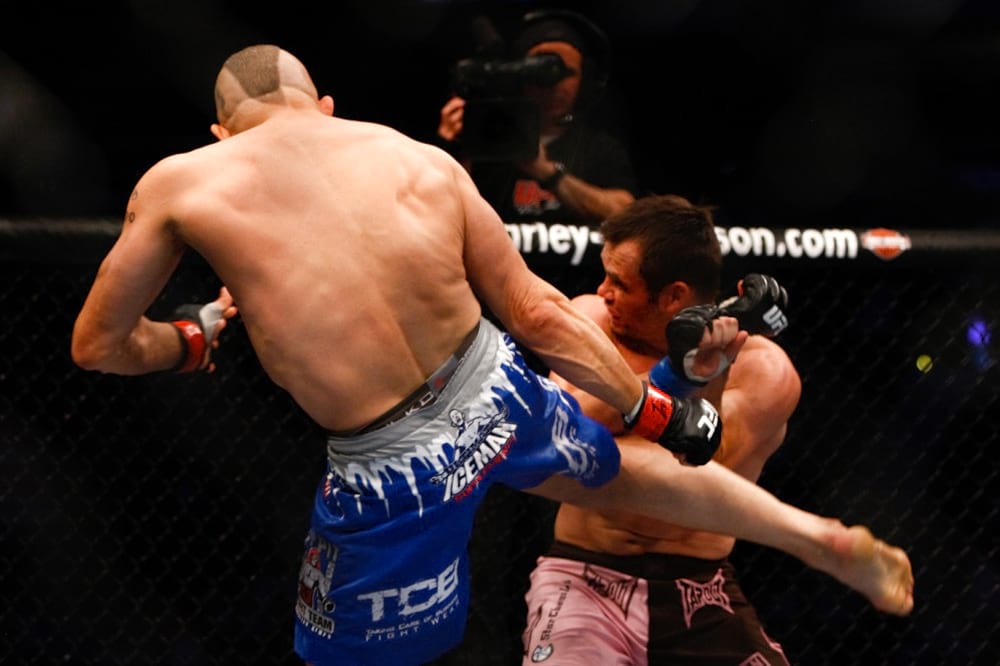
Broken Legs
We’ve seen some ghastly leg breaks in MMA over the years. Some cause fans to look away in horror, while others prompt fans to create memes and gifs and vines and quickly the horror goes viral. Rare, though, is the fighter who endures a broken leg and is still then able to continue fighting.
Step forward Demetrious Johnson, the current UFC flyweight champion and an exception to this rule. He broke his fibula in a UFC 130 fight with Miguel Torres, after checking a Torres’ kick, but was still able to persevere and grind out a close decision victory. The severity of the injury emerged in the form of extreme swelling and pain only after the adrenalin started to fade. “Yeah, the leg is broken,” Johnson said the following week. “The fibula bone is completely fractured.”
Broken Hands
Admittedly, a broken hand is an occupational hazard for anyone who calls face-punching their profession. It happens a lot. It comes with the territory. However, breaking not one but two hands – both hands – is something different altogether. A double hand-break is akin to a soccer player losing their legs during the course of 90-minute game, leaving them only with the use of their head. It removes two key components used to pursue victory and, worse, strips a fighter of their defence and ability to properly protect themselves.
Urijah Faber knows the feeling only too well. He cracked Mike Brown with a roundhouse right in the opening round of their fight in June 2009, which broke two of the bones in his right hand, and then somehow managed to do something similar to his left hand in round three, having resorted to chucking wild uppercuts at Brown, one of which glanced off his elbow. “I couldn’t even make a fist after that first round,” he said. “I was faking that my hand was okay even though it was throbbing. I proceeded to throw lefts and kicks and knees. Everything but that right hand. Once I got through that second round I knew I could do this.”
But then came the uppercut in round three. Now his thumb was dislocated. Now both hands were out of use. “I literally had no hands at all,” he said. “I was letting him get in close and throwing elbows and faking takedowns and going for knees. I ended up almost getting a submission in the fifth round. I lost a decision but gained a lot of respect and a lot of knowledge about myself. Adversity is not a thing that’s going to bother me.”
